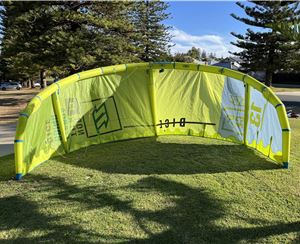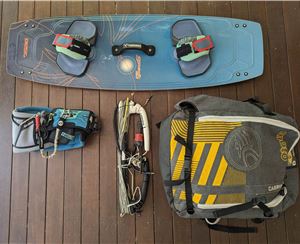Can I claim my kite's damage under warranty?

So what's a warranty claim, and what's normal wear and tear? Here's a few common problems found in kites, and a couple of scenarios to consider before calling the local store.
1: Leaking bladders Slow leaks in bladders are very common. A kite bladder is just a thin film of plastic which can be punctured by any number of reasons, and to identify the reason usually requires removal of the bladder. One pinhole, is likely to be a result of the kite being placed on the beach on top of a little sharp object (like a bindi, prickle, bit of glass, shell etc). Multiple pinholes in a pattern however, might be a result of a sharp object being left inside the kite's leading edge, or even a bladder material that's breaking down over time.
2: Ripped canopy Ripstop Nylon in its many forms (3DR, Technoforce, Quad-tex etc etc) is extremely resistant to tearing. So much so, that without any pinholes or pre-existing tears, it can be stretched by machines to insane loads. However, if you put one little tear in it, the maximum load that can be placed on a section of fabric is drastically reduced. Out of the factory, it's highly unlikely that a section of your kites canopy has been torn in any way, due to the strict quality control measures in place, and the sterile factory environment. As soon as you lay that kite on the beach for the first time, it becomes very likely the material will be scratched, turn or punctured by something. Which forms a point for a tear to originate - and you guessed it, that's not a warranty.
3: Blown Leading Edge Leading Edges can explode, and when they do, it makes a big bang! It also makes a big mess too, as the leading edge is under so much load. As above, it's very unlikely that a leading edge will have any weak points out of the factory, so most blow-outs are the result of damage on the beach. For your own satisfaction, you can even trace the blowout back to the source with a close inspection. Look for scratches, tiny little nicks in the fabric, or mini tears along the damaged edges. Check out the picture above of a blown leading edge, and particular attention to the lighter coloured scratch running from the centre of the tear, up to the top right.
4: Broken lines Like fabric, kite lines are made in a way that ensures there are no weak points in them. Also like fabric, lines are very susceptible to being scratched in the normal day-to-day use of your gear. These little scratches and cuts make weak points, and in the right scenario can lead to a breakage.
5: Broken bar components Kiteboarding bars are largely made from molded plastic parts, which fit together with stainless bolts/fittings. These different materials can create weak points which the manufacturer might not know about, so broken bars, bar ends that fall off, and cleats/chickenloops which come apart are in most cases reason to ask for a warranty claim form. But worn depower lines, rust dis-coloration and bent chicken loops are all just wear and tear.
6: Footstraps/Pads breaking While boards themselves are tough, footstraps and pads are a little like the bars above. With so many components coming together, it's possible (and has happened many times in kiteboarding's history) that the manufacturers have found out about a problem once hundreds of sets have been shipped to customers already. Things like stitching coming apart, plastic parts breaking or Velcro straps coming off, are all reason to ask for a claim form. Note: Cross threaded foostrap bolts are not, so be careful when putting together your board!
If you're not sure, the best thing to do is head down to the place you purchased your kite, and have a chat with the shop staff. They'd love to help, and offer some advise on what's normal wear and tear, and what they can help you out with. It can't hurt to ask!
















